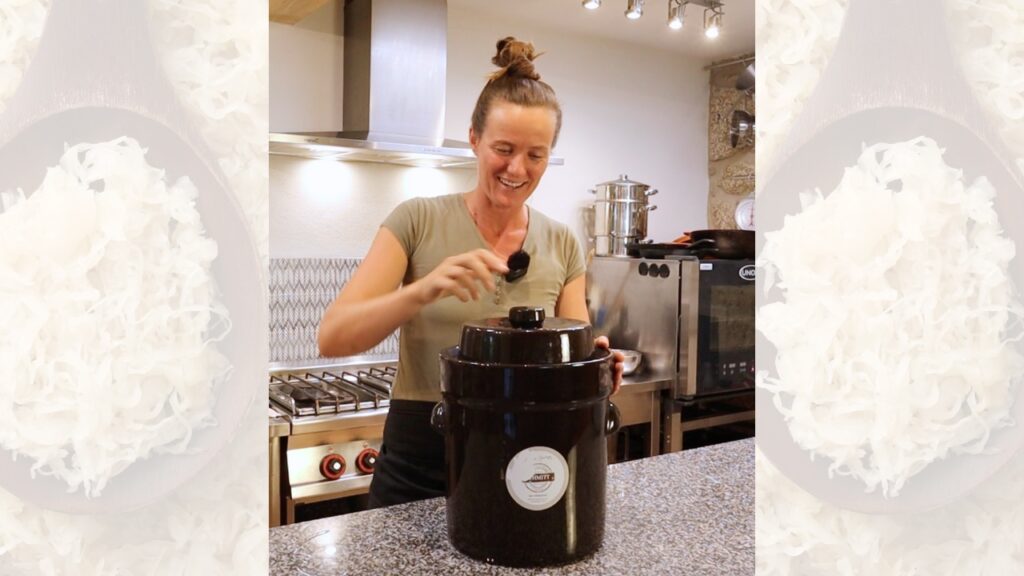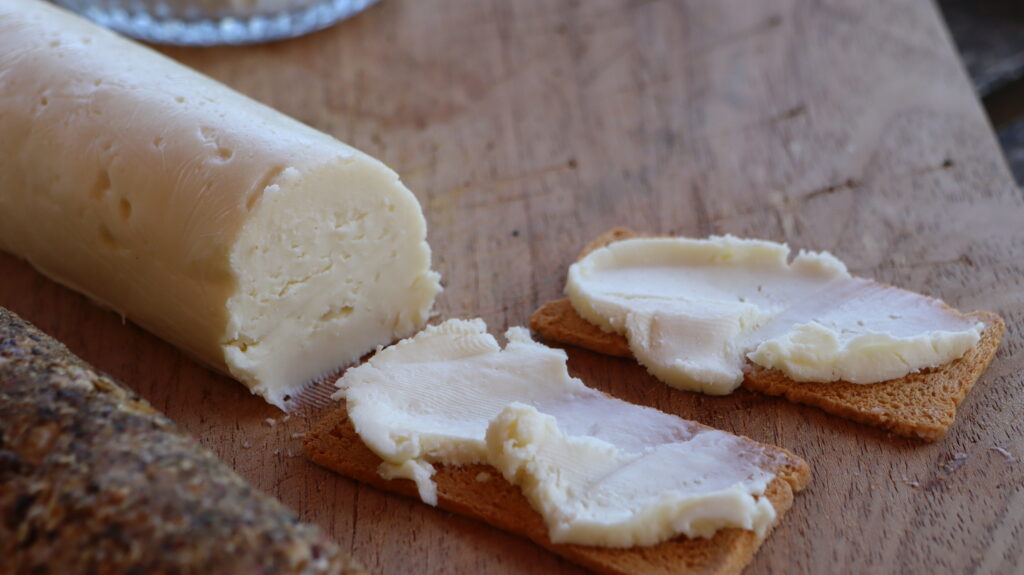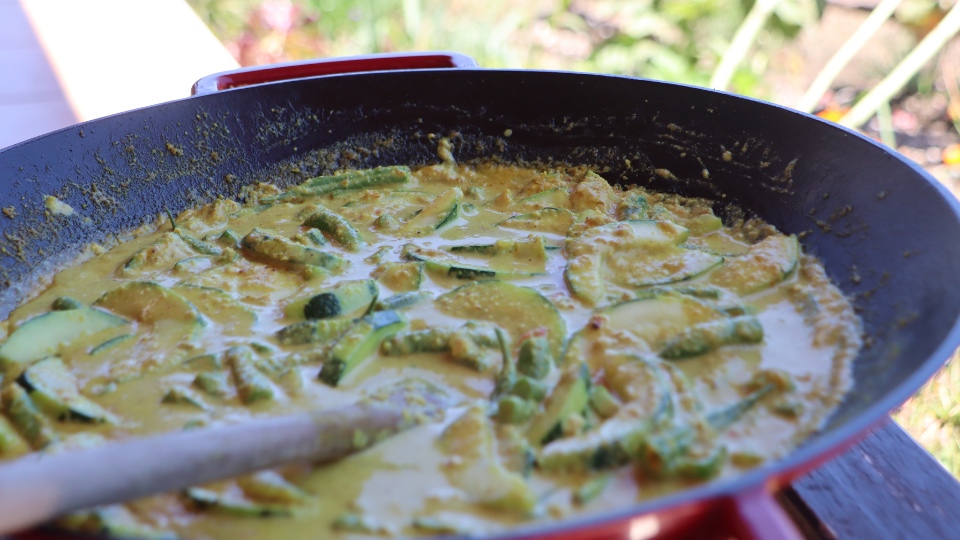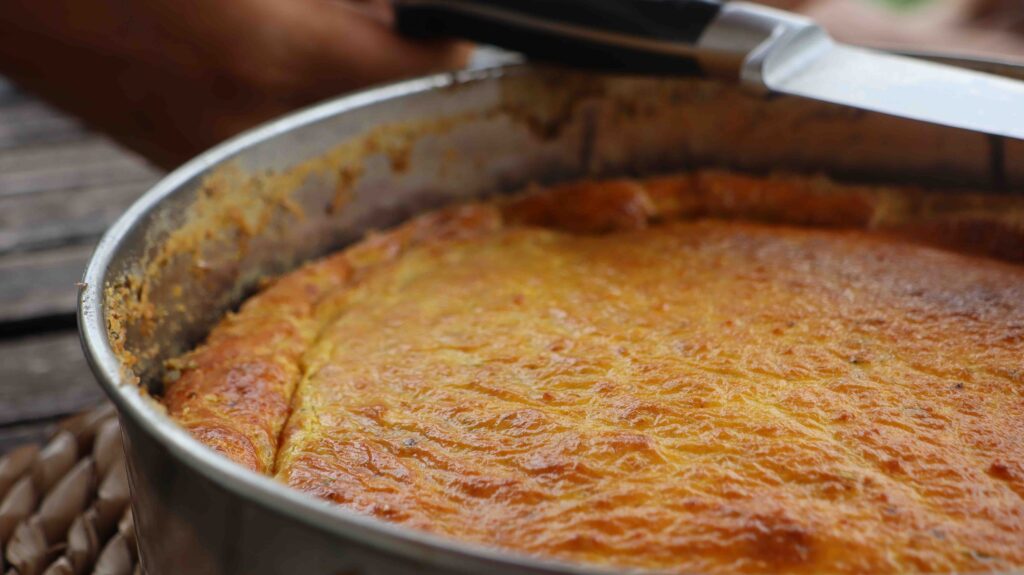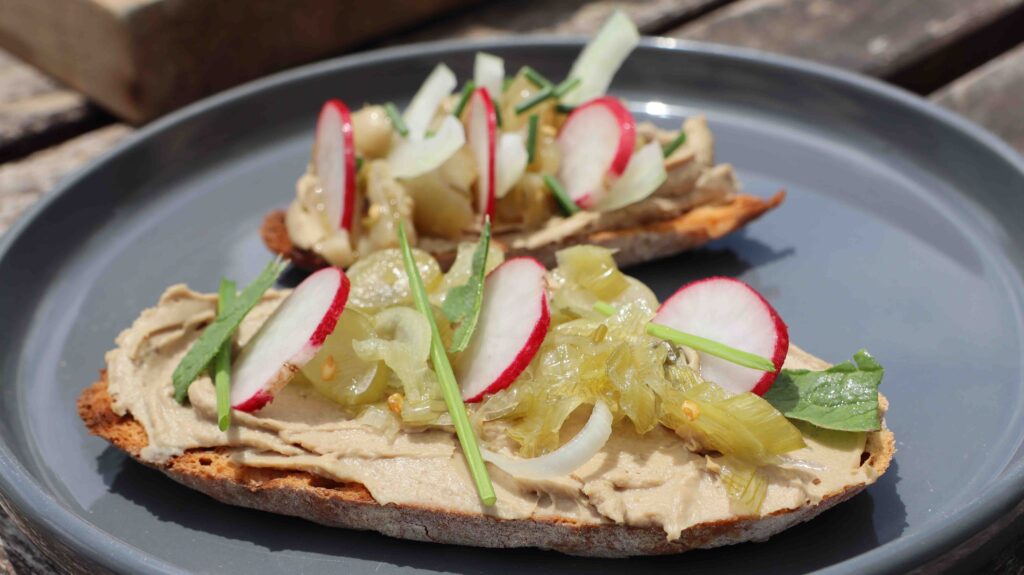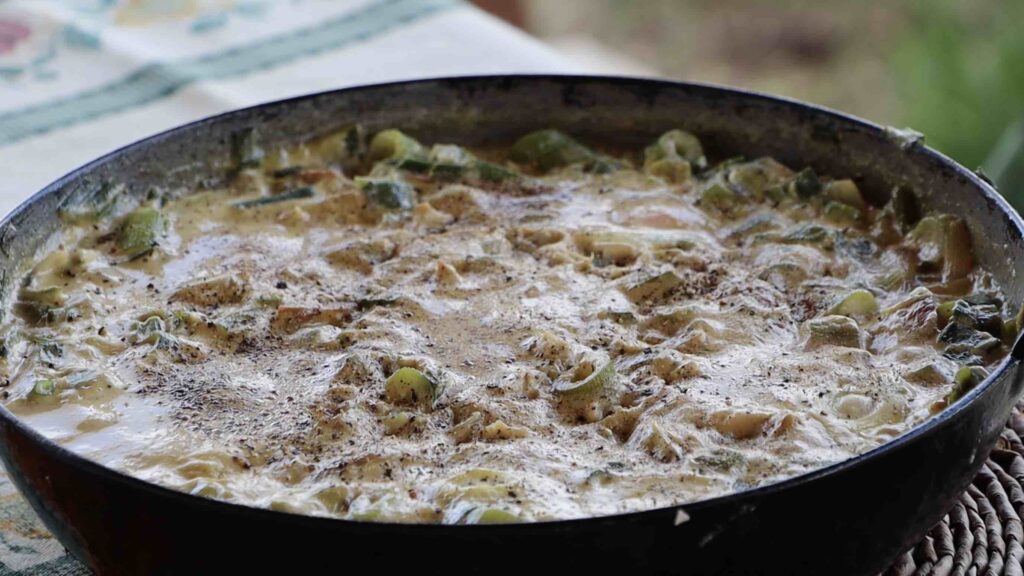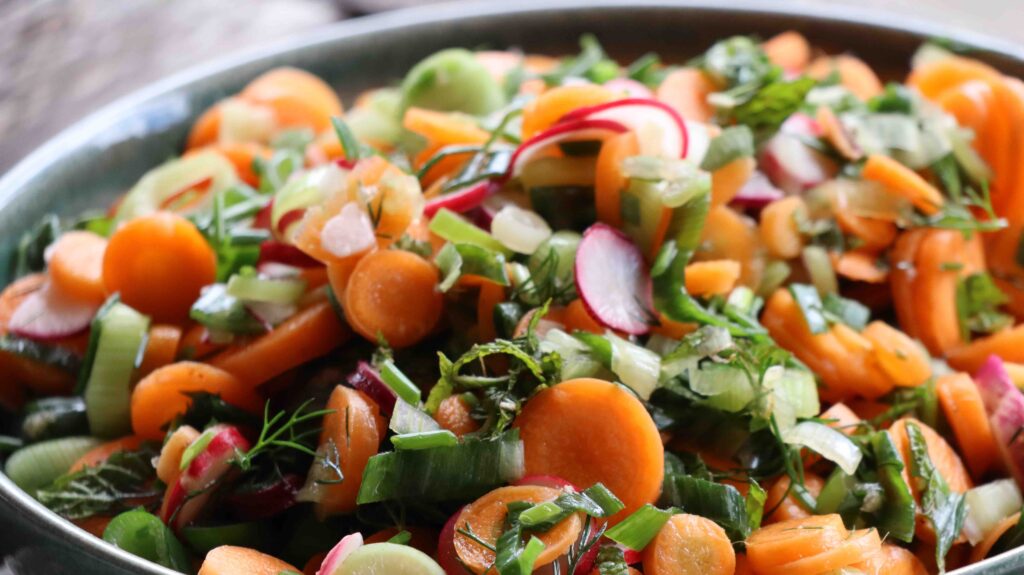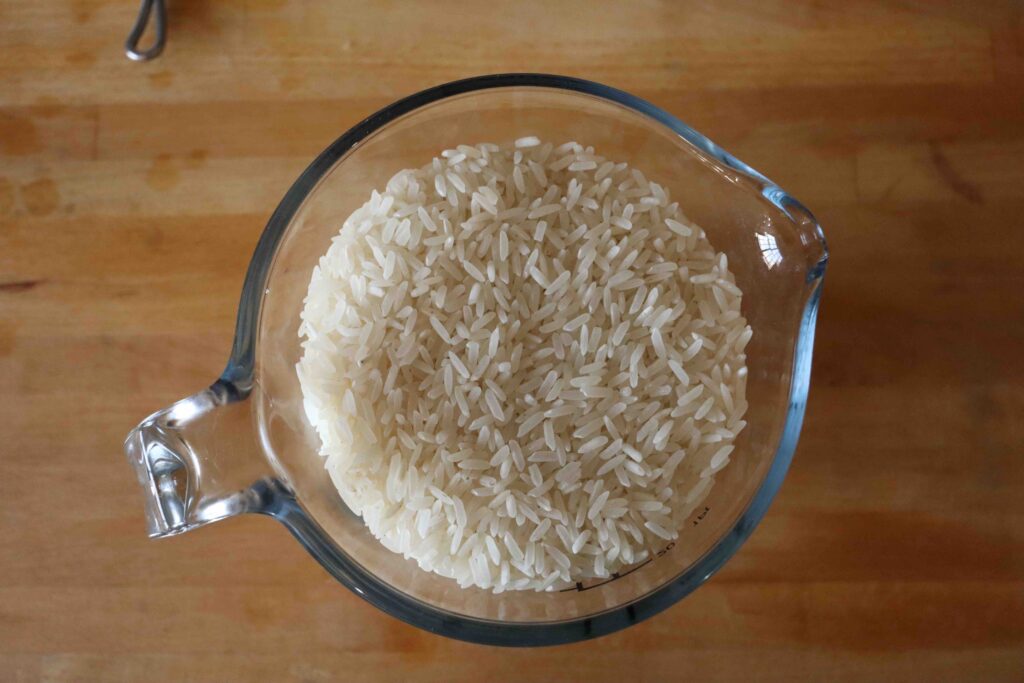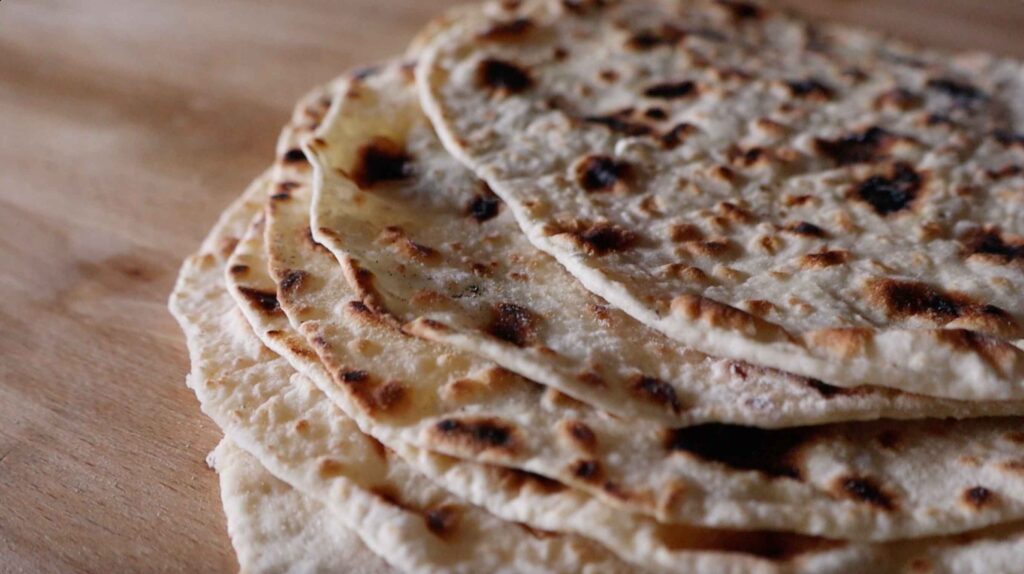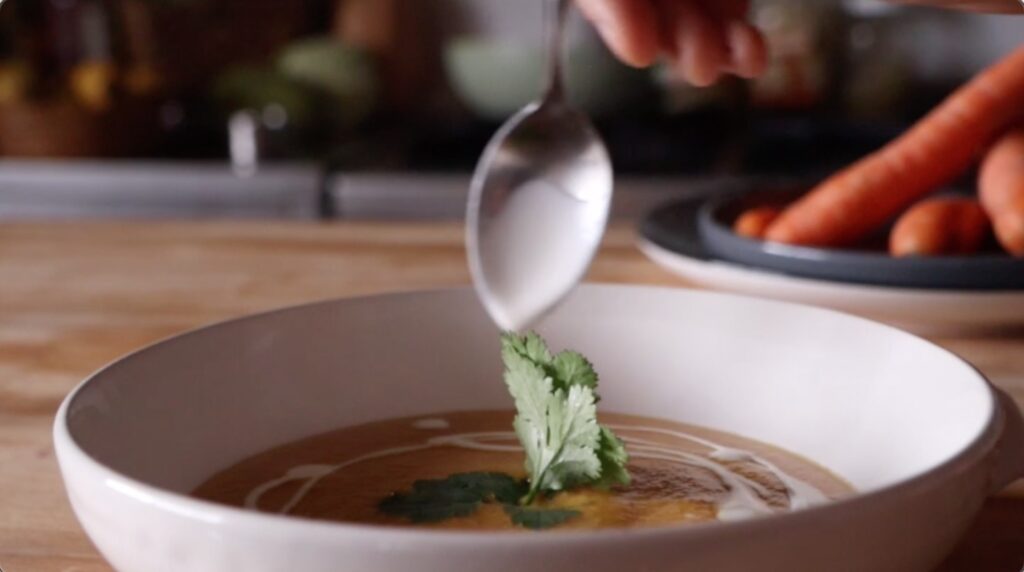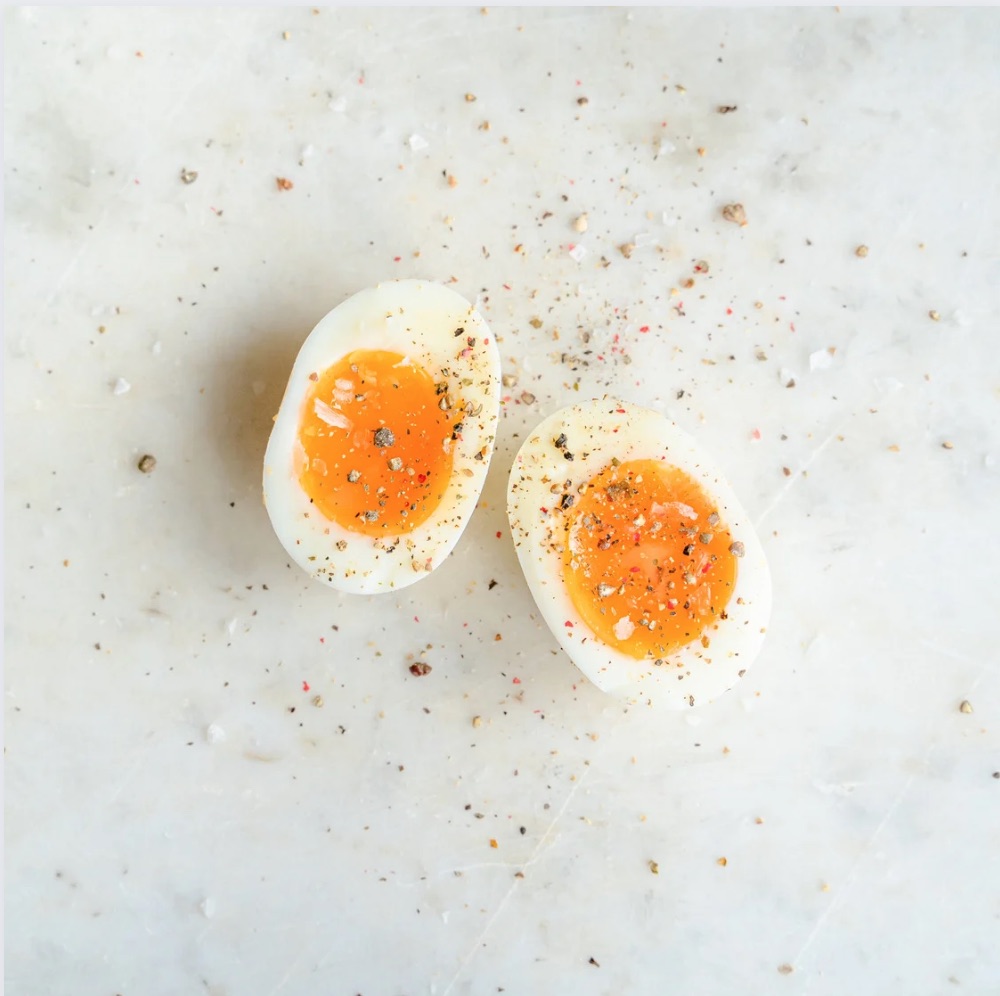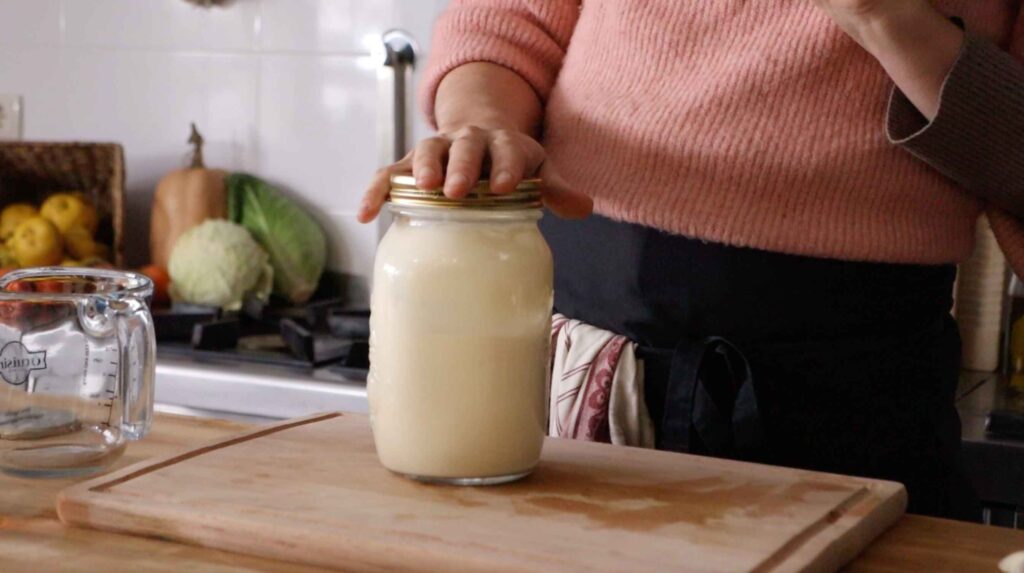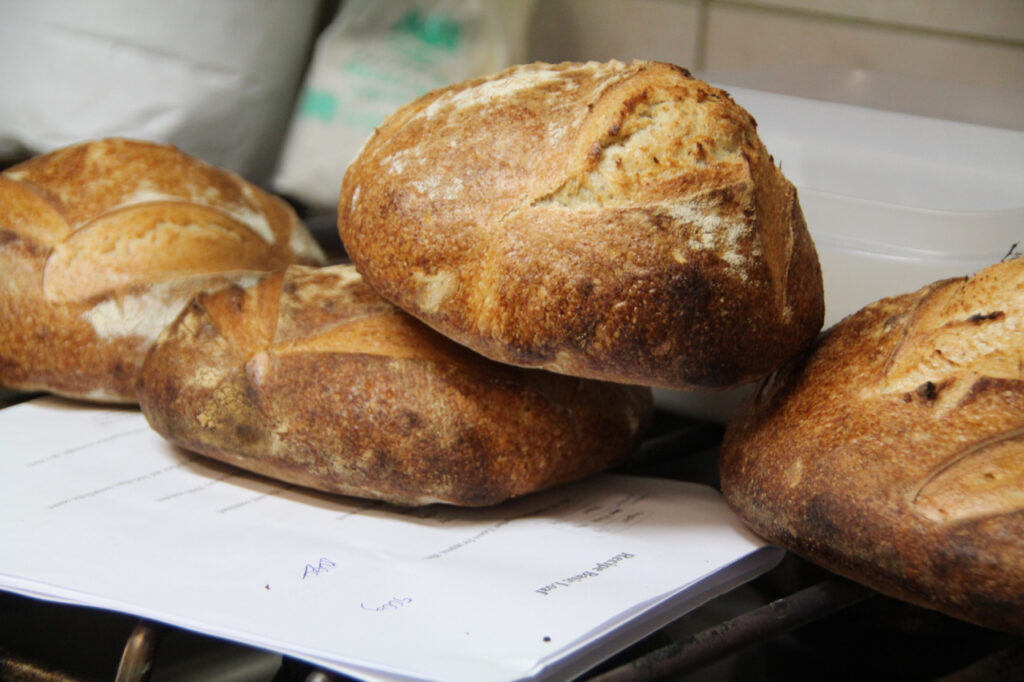Old School Sauerkraut Recipe Using Fermentation Pot
This classic sauerkraut recipe uses just bay leaf, clove, and peppercorns for a simple yet flavorful result. Made using the traditional Gartopf method, it’s a time-honored way to enjoy the benefits of lacto-fermentation with minimal ingredients.
https://youtu.be/JVQRue2otPs
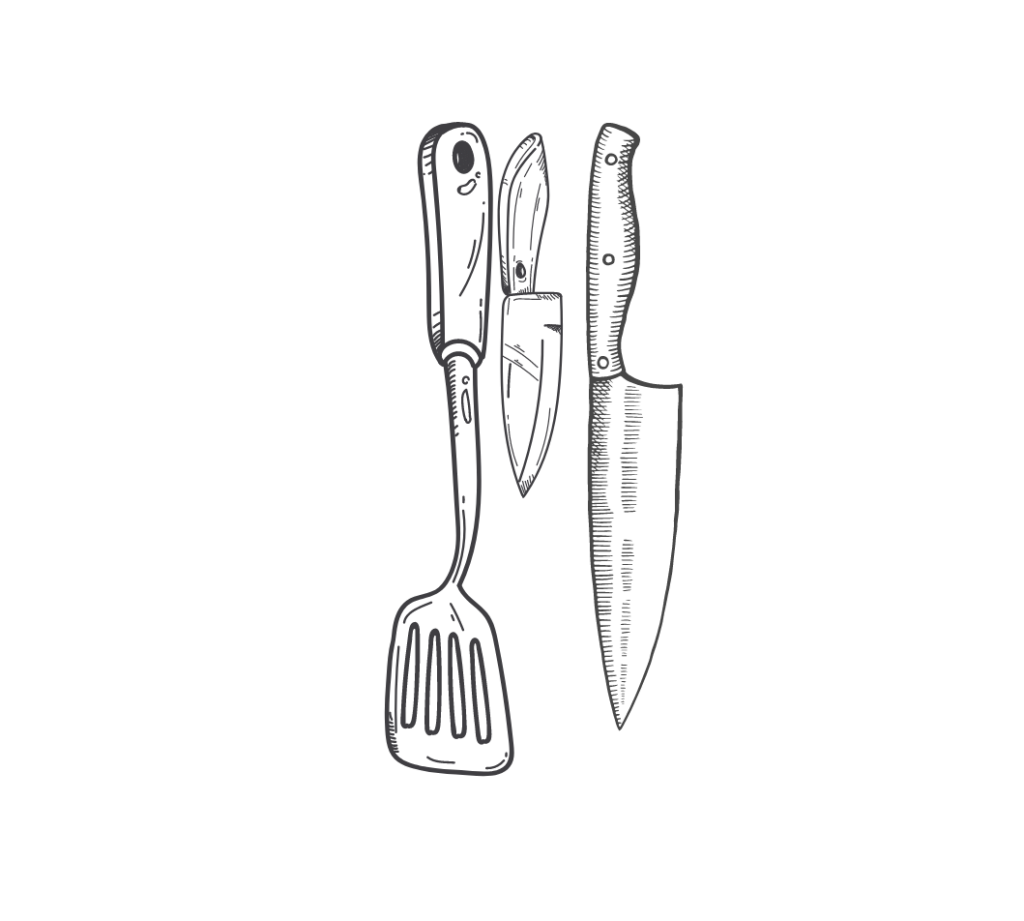
Making Old School Sauerkraut Recipe Using Fermentation Pot
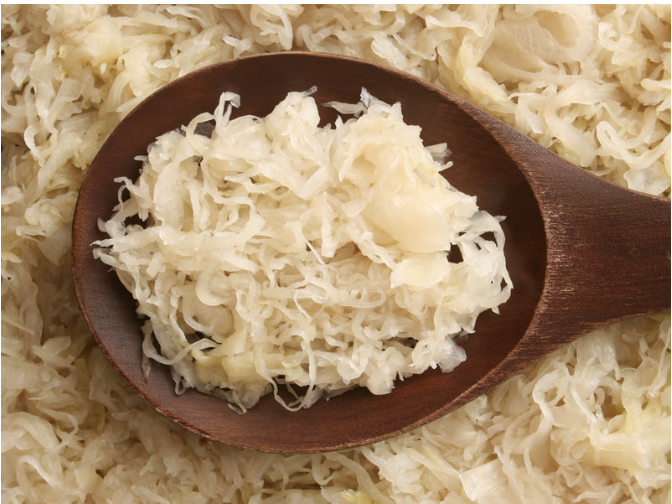
This classic sauerkraut recipe uses just bay leaf, clove, and peppercorns for a simple yet flavorful result. Made using the traditional Gartopf method, it’s a time-honored way to enjoy the benefits of lacto-fermentation with minimal ingredients.

Serves:
8 kg
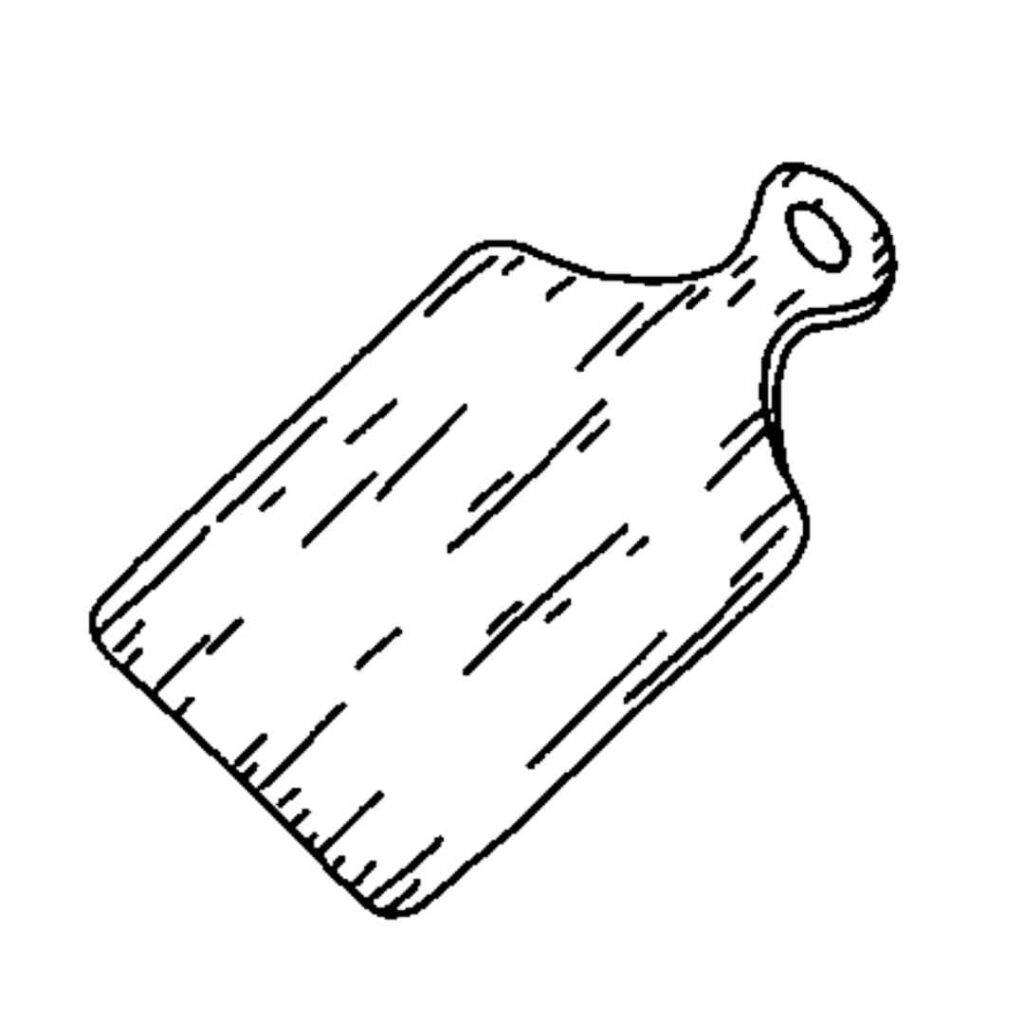
Time to Prepare:
1,5 hour

Time to cook or cure:
2 weeks
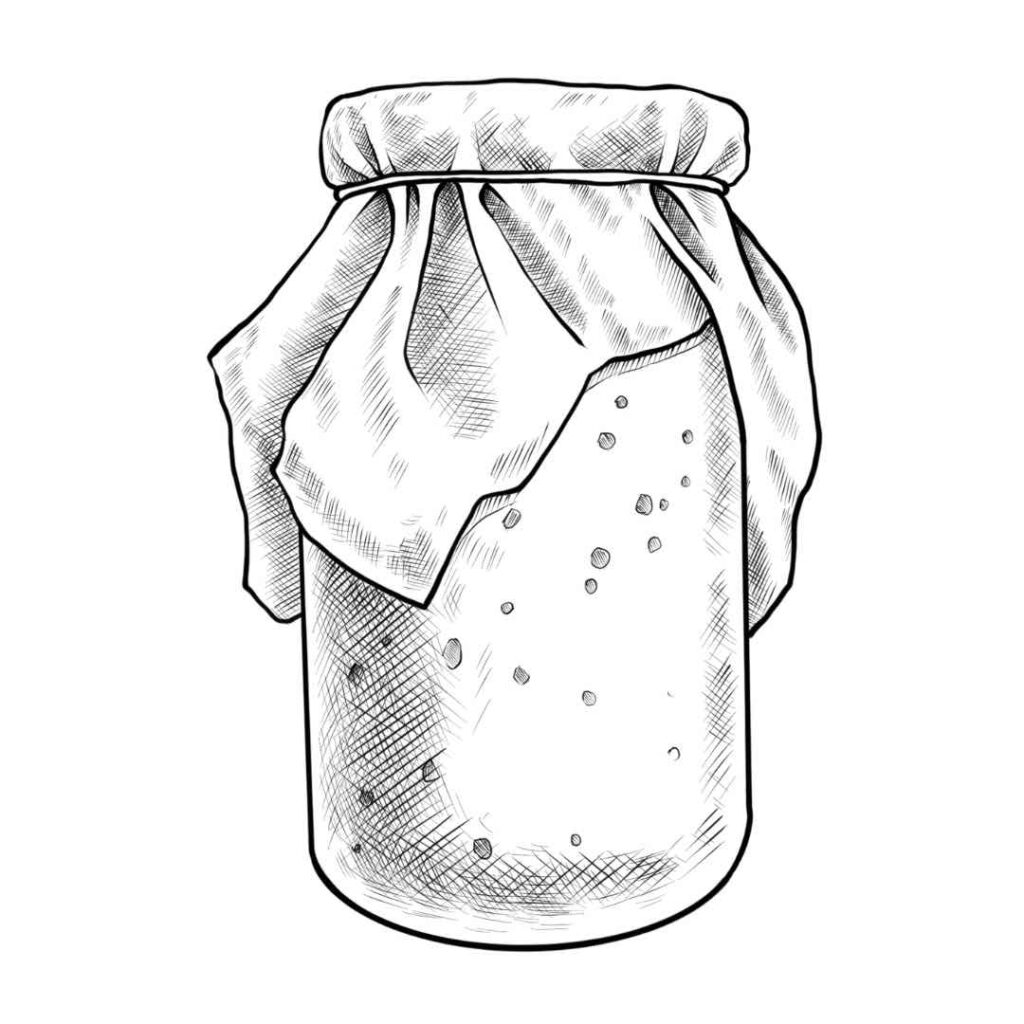
Skill
Fermentation
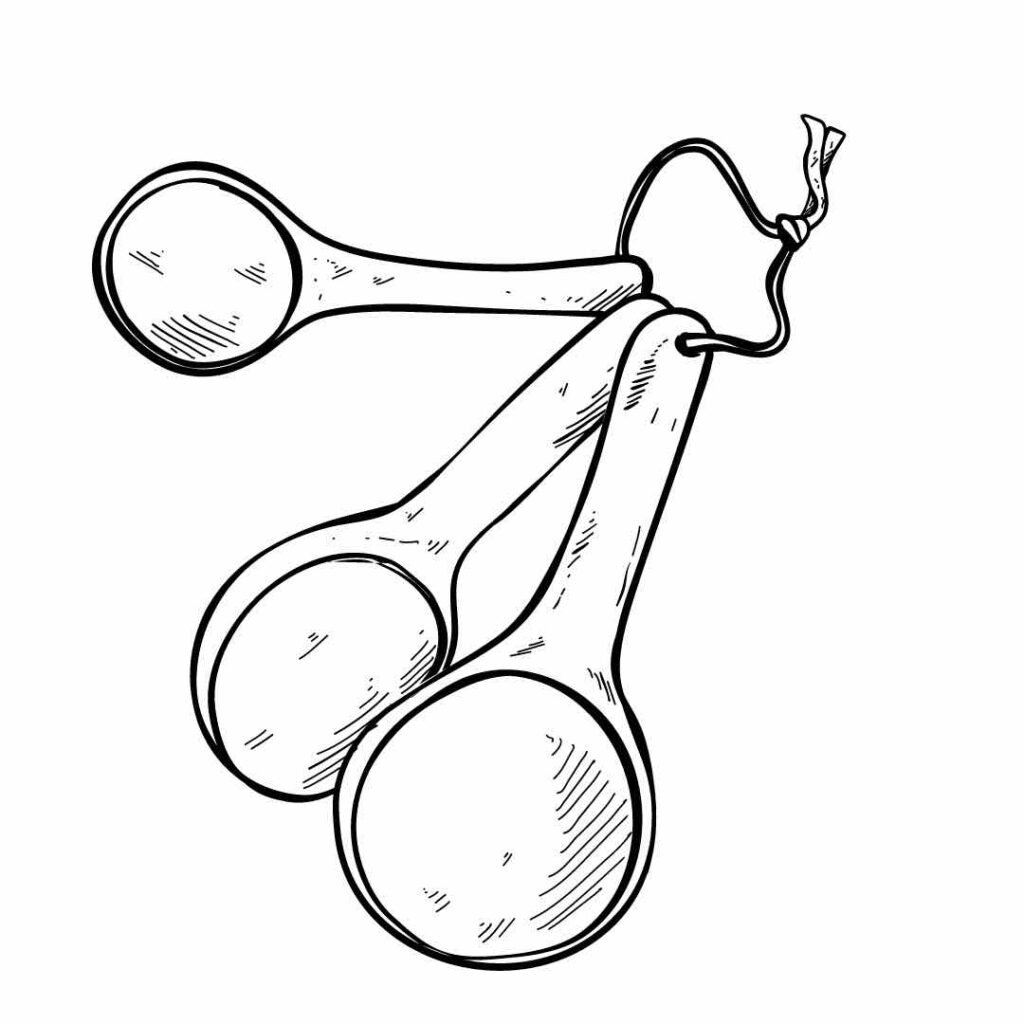
Serves:
8 kg

Time to Prepare:
1,5 uur

Time to cook or cure:
2 weeks

Skills:
Fermentation

Ingredients & Tools
Ingredients
- 8 kg cabbage (about 16 medium heads)
- 160 g sea salt (20 g per kg of cabbage)
- 4 bay leaves
- 8 whole cloves
- 2 tablespoons black peppercorns
Tools
- Gartopf fermentation pot (10-15 L capacity)
- Sharp knife or mandoline for shredding cabbage or a magi mix (highly recommended!)
- Large mixing bowl
- Wooden tamper or cabbage stomper
- Kitchen scale for accurate measurements
- 96% alcohol to disinfect rim of pot and inside of the pot
- Weights (ceramic or stone) to press down the cabbage
- Fermentation lid with water seal (part of the Gartopf pot)
Useful Guidelines for Lacto-Fermentation:
- Temperature Control: Maintaining a consistent temperature is key for successful fermentation. Warmer temperatures speed up fermentation, while cooler temperatures slow it down.
- Submersion: Always ensure the cabbage is fully submerged in its brine to prevent spoilage.
- Patience: The longer you ferment, the more complex the flavor. Taste after 4 weeks and let it ferment longer if you prefer a stronger flavor.
Directions
Simply follow these steps in order to make sauerkraut:
-
Prepare the Cabbage:
- Remove the outer leaves of the cabbage and set aside.
- Cut the cabbage into quarters and remove the core.
- Shred the cabbage finely using a knife or mandoline.
-
Salt the Cabbage:
- Weigh the shredded cabbage and add 20 g of sea salt per kilogram.
- In a large bowl, mix the cabbage and stomp it hard to release the liquid. Salt thoroughly with the salt. Let it sit for about 20 minutes to allow the cabbage to release its juices.
- Sprinkle some of the bay leaves, cloves, and peppercorns and mix well.
-
Pack the Cabbage:
- Prepare the gartopf by cleaning it with boiling water and soap. Then disinfect the inside of the pot and the rim in which the water will be deposted.
- Layer a portion of the salted cabbage into the Gartopf pot.
- Tamp down the cabbage firmly using a wooden tamper to release more juices or very clean hands.
- Repeat this process, layering cabbage, spices, and tampering until all the cabbage is packed into the pot.
-
Add Weights and Cover:
- Place the reserved outer leaves on top of the shredded cabbage.
- Add the weights to press down the cabbage, ensuring it’s submerged under its juices. if you do not have. a weight, use a food grade plastic bag filled with water.
- Seal the pot with its water-sealed fermentation lid and fill the water moat to create an airtight seal.
-
Fermentation:
- Place the pot in a cool, dark place, ideally between 18-22°C (64-72°F).
- Check the water seal occasionally to ensure it remains filled.
- Fermentation typically takes 2-6 weeks, depending on the temperature and your desired level of tanginess.
Storing Tips and Temperatures:
- After Fermentation: Once fermentation is complete, transfer the sauerkraut to glass jars with tight-fitting lids.
- Refrigeration: Store the jars in the refrigerator at 4°C (39°F). Properly stored, sauerkraut can last for several months.
- Cellar Storage: If you have a root cellar or cool storage area (ideally around 10°C or 50°F), you can store the fermentation pot there for longer-term storage.
Enjoy your homemade sauerkraut, a true testament to the old-school sauerkraut recipe using a fermentation pot!
Facebook
Youtube
Instagram
Print Recipe
Building Flavour: learn how!
Cured Meats
Dairy Products
Fermented Vegetables
Recipe Categories


